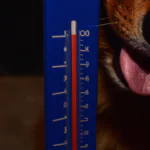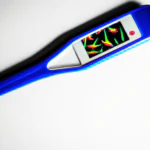Puppies are delicate creatures and need to be kept warm, but how warm is too warm? And how do you know when they’re able to regulate their own body temperature? In this article, we’ll answer all your questions about keeping puppies warm. We’ll tell you how to know if they’re too hot or too cold, and we’ll give you some tips on how to keep them comfortable.
Table of Contents
When can puppies regulate their body temperature?
Puppies cannot maintain their own body heat for a week or two after birth. Make sure the puppies are kept warm. Young puppies cannot maintain their own body temperature for a week or two after birth. As long as the puppies stay close to their mother, the room temperature is not too critical.
A good way to make sure the puppies are warm enough is to check their tummies. If they feel cool to the touch, then they need more heat. One way to provide extra warmth is to put a heating pad on one side of the whelping box and cover it with a towel. Make sure the puppies have access to the entire box so they can move away from the heat if they get too warm.
Another way to provide extra warmth is to use an infrared lamp. Suspend the lamp above the whelping box so that it shines down on the puppies but does not touch them. You can also use a regular household lamp, as long as you don’t put it too close to the box so that the puppies could overheat or get burned.
Monitor the puppies’ body temperature closely. Overheating can be just as dangerous as being too cold. The ideal temperature for puppies is between 85 and 90 degrees Fahrenheit.
If the room is too warm:
-
- The puppies may become panting and restless.
- They may have diarrhea.
If the room is too cold:
-
- The puppies may huddle together and cry.
- They may stop eating and nursing.
2 Week Old Puppies and Heat: What you need to Know
Yes, young puppies can be at even greater risk of heatstroke. They don’t have the ability to regulate their temperature the way an adult dog can; breeds with temperature-regulating double coats won’t have developed their adult coat yet; and they are, of course, full of energy.
Puppies can easily become overheated if they are left in a car on a hot day, or if they are exercised too strenuously in warm weather. If you suspect your puppy has heatstroke, take him to the vet immediately.
Signs of heatstroke in puppies include excessive panting, drooling, lethargy, weakness, collapse, and seizures. If your puppy is showing any of these signs, cool him down immediately by wetting him with cool (not cold) water and fanning him. Then take him to the vet as soon as possible.
To prevent heatstroke in puppies, never leave them in a car on a hot day, even for a short time. Avoid exercising them in warm weather, and make sure they have access to cool water and shade at all times.
3 Week Old Puppies and Temperature: Keeping them Warm
During the first four or five days of life, puppies should be kept in an environment that is between 85 and 90 degrees. The temperature may gradually be decreased to 80 degrees by the seventh to tenth day, and may be reduced to 70-75 degrees by the end of the fourth week.
It is important to keep puppies warm during their first few weeks of life.
After the fourth week, the pup can be gradually introduced to the outside world. During this time, it is important to make sure that the pup does not get too cold or too hot.
- If it is cold outside, make sure the pup has a warm bed to sleep in and that they are not left outside for too long.
- If it is hot outside, make sure the pup has access to shade and fresh water at all times.

How Long do Puppies need a Heat Source?
Newborn puppies are able to maintain a body temperature that is about 12°F warmer than the air temperature. This is thanks to their furry coats and their mother’s constant supervision.
However, if the temperature drops too low, the puppies may start to experience hypothermia. This is why it’s important for breeders to make sure that their whelping box is kept at a comfortable temperature.
Puppies are also susceptible to chilling when they are wet. This is why it’s important to towel dry them off after they have a bath.
Here are some signs that a puppy may be starting to experience hypothermia:
-
-
- Shivering
- Lethargy
- Weakness
- Slow heart rate
- Dilated pupils
- Blue tint to the skin
-
If you notice any of these signs, it’s important to take action immediately. Puppies cannot regulate their own body temperature, so they rely on their mother and their surroundings to stay warm.
If you think a puppy may be starting to experience hypothermia, the first thing you should do is warm up the environment. This can be done by turning up the heat or using a space heater. You should also put the puppy in a dry, warm place.
Puppies need to be protected from extreme cold weather because they are unable to regulate their own body temperature. Their fur coats provide some insulation, but they are also very susceptible to chilling when they are wet. If you think a puppy may be starting to experience hypothermia, the first thing you should do is warm up the environment.
Puppies and Their First Heat: Everything you need to Know
Puppies need a constant heat source for the first two weeks after they are born. After that, they begin to develop their own body heat and can regulate their temperature on their own. However, even at four weeks old, they are not fully able to regulate their body temperature and may still need a heat source.
Newborn puppies cannot generate their own body heat and rely on their mother’s body heat to stay warm. If they are separated from their mother, they will need an external heat source, such as a heat lamp, to keep them warm. Puppies lose a lot of body heat through their skin, so it is important to make sure they are not in a drafty area or exposed to cold temperatures.
As puppies grow, they begin to develop their own body heat. By seven weeks old, most puppies no longer need a heat source. However, some puppies, particularly small breeds, may still benefit from a heat source until they are fully grown.
If you are unsure whether your puppy needs a heat source, talk to your veterinarian. They can help you determine whether your puppy is developmentally ready to be without a heat source.
What age is a puppy’s first heat?
On average, puberty (or sexual maturity) is reached at about six months of age, but this can vary by breed. Smaller breeds tend to have their first estrous cycle at an earlier age, while large and giant breeds may not come into heat for the first time until they reach eighteen months to two years of age.
This means that if you want to breed your dog, you’ll need to be aware of when she’s likely to come into heat, and plan accordingly. Some dog owners choose to have their dogs spayed (or “desexed”), which means that the dog’s ovaries are removed surgically and she can’t have puppies. This is generally done before the dog’s first heat.
If you don’t intend to breed your dog, but she comes into heat anyway, there are a few things you can do to make her more comfortable. Wearing a doggy diaper or “bitch-suit” can help to catch any blood or discharge, and avoid stains on your furniture or carpet. Making sure she has plenty of clean water to drink will help to flush out her system, and providing her with a safe place to stay (away from any male dogs!) will help to minimize her stress levels.
In general, a female dog in heat should not be handled too much, as this can increase her level of discomfort. However, it’s important to keep an eye on her and make sure she’s not showing any signs of distress. If she seems listless, off her food, or is panting excessively, it’s best to take her to the vet for a check-up.
-
- Be aware of your dog’s breed and expected age of sexual maturity.
- Talk to your veterinarian about whether or not you should breed your dog, and if so, when the best time would be.
- If you don’t want to breed your dog but she comes into heat anyway, try using a doggy diaper or “bitch-suit”
- Keep an eye on your dog for any signs of discomfort or distress.




